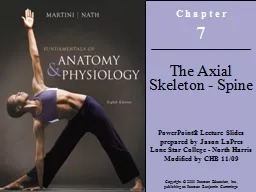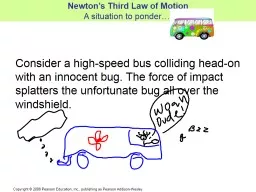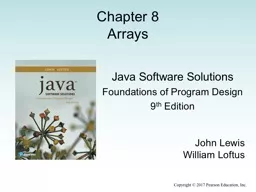PPT-© 2017 Pearson Education, Inc.
Author : sherrill-nordquist | Published Date : 2018-02-23
Chapter 11 The Interstellar Medium 2017 Pearson Education Inc Units of Chapter 11 Interstellar Matter StarForming Regions Dark Dust Clouds Formation of Stars Like
Presentation Embed Code
Download Presentation
Download Presentation The PPT/PDF document "© 2017 Pearson Education, Inc." is the property of its rightful owner. Permission is granted to download and print the materials on this website for personal, non-commercial use only, and to display it on your personal computer provided you do not modify the materials and that you retain all copyright notices contained in the materials. By downloading content from our website, you accept the terms of this agreement.
© 2017 Pearson Education, Inc.: Transcript
Chapter 11 The Interstellar Medium 2017 Pearson Education Inc Units of Chapter 11 Interstellar Matter StarForming Regions Dark Dust Clouds Formation of Stars Like the Sun Stars of Other Masses. Chapter 8 Moons, Rings, and Plutoids. © 2017 Pearson Education, Inc.. Units of Chapter 8. The Galilean Moons of Jupiter. The Large Moons of Saturn and Neptune. The Medium-Sized Jovian Moons. Planetary Rings. Chapter 17 Cosmology. © 2017 Pearson Education, Inc.. Units of Chapter 17. The Universe on the Largest Scales. The Expanding Universe. Cosmic Dynamics and the Geometry of Space. The Fate of the Cosmos. Question 1. Based on their shapes and stars, elliptical galaxies are most like the Milky Way’s. disk . and spiral arms.. halo. .. central . bulge.. open . clusters.. companion . galaxies,. the . Magellanic. Chapter 0 Charting the Heavens. © 2017 Pearson Education, Inc.. Units of Chapter 0. The . “. Obvious. ”. View. Earth. ’. s Orbital Motion. The Motion of the Moon. The Measurement of Distance. Chapter . 9 . The Sun. © 2017 Pearson Education, Inc.. Units of Chapter 9. The Sun in Bulk. The Solar Interior. The Solar Atmosphere. The Active Sun. The Heart of the Sun. Summary of Chapter 9. © 2017 Pearson Education, Inc.. Question 1. Mercury’s surface most resembles which of these?. The Moon’s far side. Venus’s polar regions. Earth’s deserts. The Moon’s near side. Mars’s deserts. © 2017 Pearson Education, Inc.. Question 1. © 2017 Pearson Education, Inc.. Both Jupiter and Saturn. have liquid metallic . hydrogen in . their interiors.. have rings.. emit more energy than . they . absorb . from the Sun.. rotate very rapidly.. Question 1. Some regions of the Milky Way’s disk appear dark because. there . are no stars there.. stars . in that direction are obscured by interstellar . gas. .. stars . in that direction are obscured by . Question 1. The Drake equation attempts to define the number of. planets . in the Milky . Way Galaxy. .. planets . with life in . the universe. .. stars . with planets . like Earth. .. civilizations . C h a p t e r. 7. The Axial Skeleton - Spine. PowerPoint® Lecture Slides prepared by Jason LaPres. Lone Star College - North Harris. Modified by CHB 11/09. Copyright © 2009 Pearson Education, Inc.,. Chapter 9. Inheritance. Java Software Solutions. Foundations of Program Design. 9. th. . Edition. John Lewis. William Loftus. Inheritance. Inheritance is a fundamental object-oriented design technique used to create and organize reusable classes. Consider a high-speed bus colliding head-on with an innocent bug. The force of impact splatters the unfortunate bug all over the windshield.. Newton’s Third Law of Motion. A situation to ponder…. Copyright © 2017 Pearson Education, Inc. Chapter 8 Arrays Java Software Solutions Foundations of Program Design 9 th Edition John Lewis William Loftus Arrays Arrays are objects that help us organize large amounts of information Why This Matters. Understanding bone anatomy and the process of bone remodeling allows you to work effectively with patients with bone diseases such as osteoporosis. © 2017 Pearson Education, Inc.. 6.1 Skeletal Cartilages.
Download Document
Here is the link to download the presentation.
"© 2017 Pearson Education, Inc."The content belongs to its owner. You may download and print it for personal use, without modification, and keep all copyright notices. By downloading, you agree to these terms.
Related Documents














